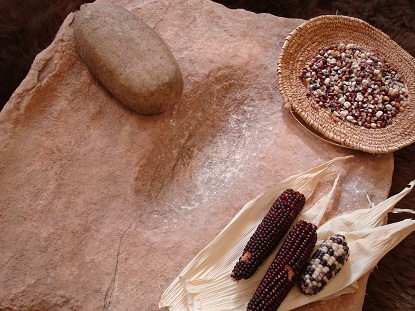
Grinding tools used by prehistoric people living in what is now Alibates Flint Quarries National Monument. Photo Credit: JC Pappa and A. Garcia, National Park Service.
The Plains Woodland Tradition (250 B.C. – A.D. 1200) marks a subsistence transition on the plains from earlier Archaic hunting-gathering and an emphasis on bison to farming. In part, this transition was the result of the adoption of eastern technologies, including the bow and arrow and pottery, as well as the introduction of a new strain of corn more suitable to the plains environment. As a cultural tradition, the Plains Woodland Tradition encompasses many different prehistoric cultures and people, including the Avonlea and Beehive complexes of the northwest plains, and the Keith Focus of the central plains. Common to the Plains Woodland Tradition are certain types of projectile points, mortuary mounds, cord-roughened ceramic vessels, ceramic and stone pipes, and seasonal village occupation.
